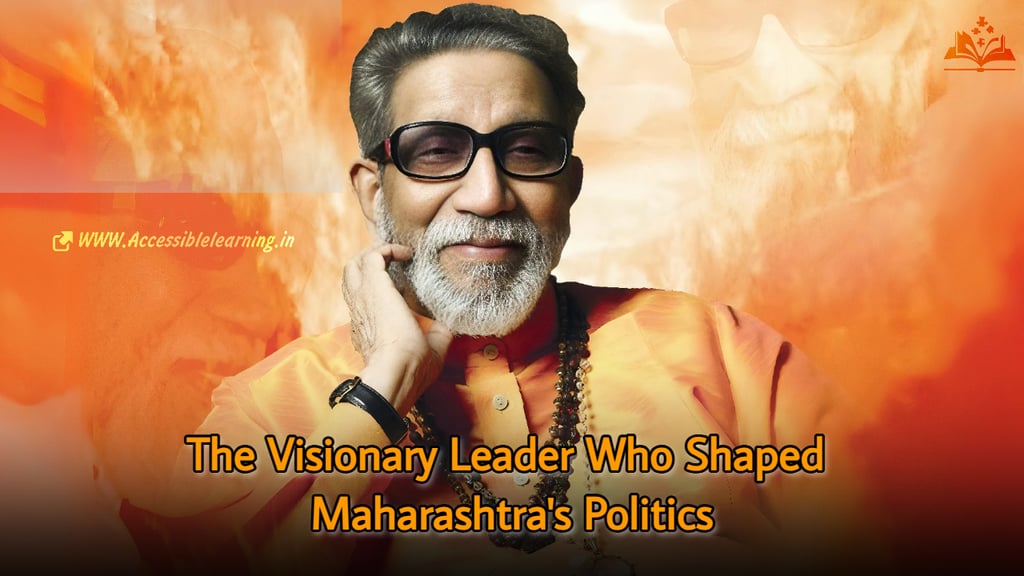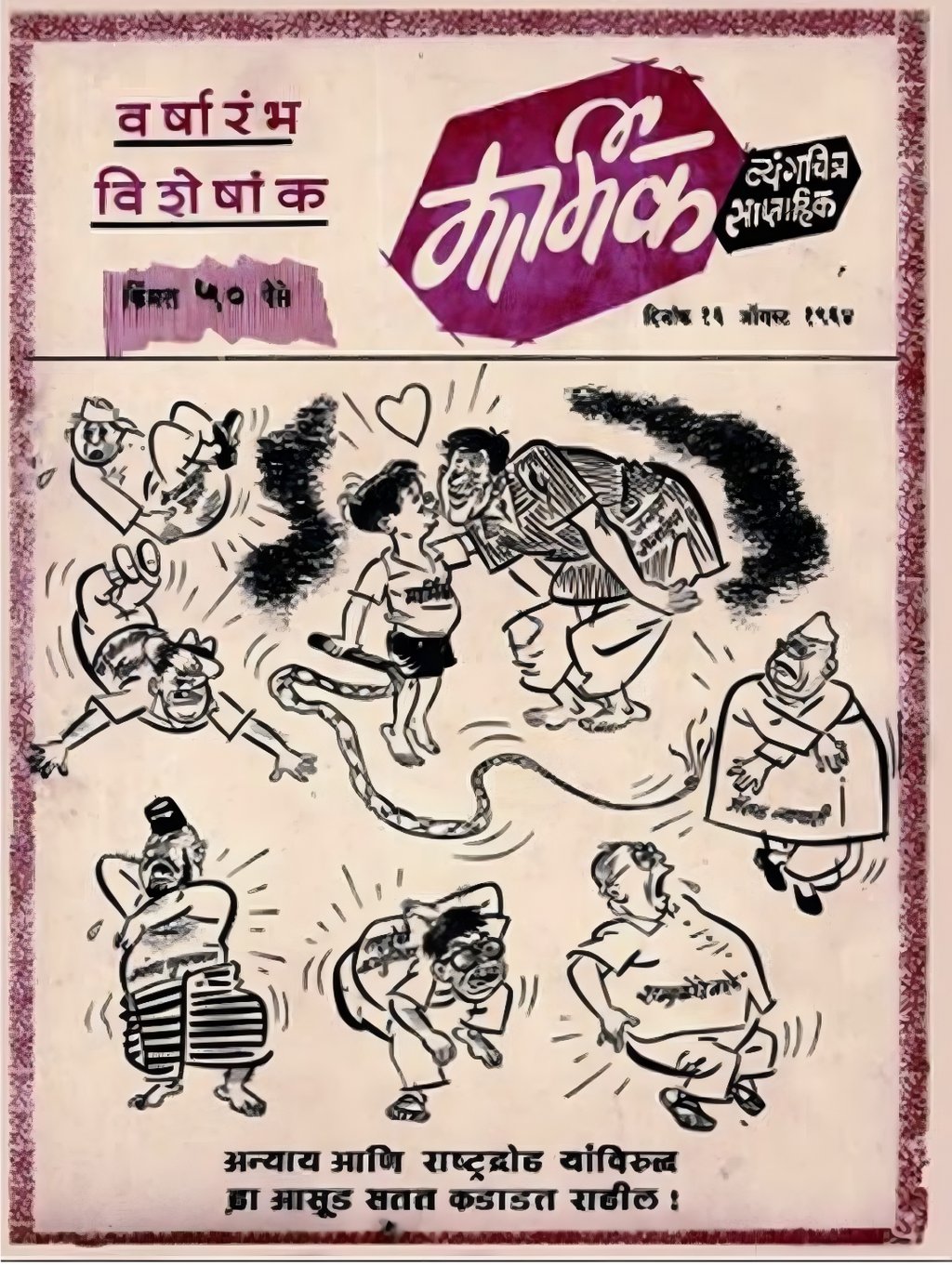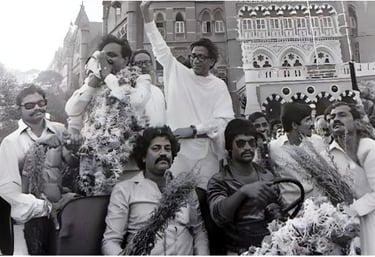
The Legacy of Balasaheb Thackeray: From Shiv Sena to Cultural Icon?
Discover the life and legacy of Balasaheb Thackeray, the iconic founder of Shiv Sena. Explore his early life, political journey, cultural influence, and his lasting impact on Maharashtra's identity and Indian politics in this in-depth and humanized article.
THE GREAT LEADERINDIAN HISTORYBIOGRAPHYPOLITICAL JOURNEYEDUCATION/KNOWLEDGE
Sachin K Chaurasiya
12/21/20246 min read


Balasaheb Thackeray (बालासाहेब ठाकरे) Ji, often referred to as the “Hindu Hriday Samrat (हिंदू हृदय सम्राट)” (Emperor of Hindu Hearts), was a towering figure in Indian politics and one of the most charismatic leaders Maharashtra has ever seen. Known for his fiery oratory, bold stance, and unwavering commitment to the rights of Marathi people, Thackeray carved a unique niche in Indian political history. He was the founder of the Shiv Sena, a political party that redefined regional politics in India and played a significant role in shaping the sociopolitical landscape of Maharashtra.
Early Life and Career
Bal Keshav Thackeray Ji (बाल केशव ठाकरे) was born on January 23, 1926, in Pune, Maharashtra. He was the eldest son of Keshav Sitaram Thackeray (सीताराम ठाकरे), a social reformer and a prominent figure in the Samyukta Maharashtra movement, which advocated for the creation of a separate Marathi-speaking state. Balasaheb's upbringing was deeply influenced by his father’s ideologies and activism.
Thackeray initially pursued a career in journalism and worked as a cartoonist with the English-language daily The Free Press Journal in Mumbai. His sharp wit and incisive political commentary soon earned him recognition. In 1960, he started his own cartoon weekly, Marmik (मार्मिक), which became a platform to voice the concerns of the Marathi-speaking population. Through Marmik, Thackeray highlighted issues like unemployment, the influx of non-Maharashtrians into Mumbai, and the perceived marginalization of Marathi culture and identity.
The Formation of Shiv Sena
In 1966, Thackeray founded the Shiv Sena with the motto "Marathi Manoos First." The party was established to champion the rights of the Marathi-speaking populace, address issues of unemployment among locals, and preserve the cultural identity of Maharashtra. The name "Shiv Sena" was inspired by Chhatrapati Shivaji Maharaj, the revered Maratha warrior king.
Thackeray’s fiery speeches and mass appeal resonated with the common people, particularly the youth, who were drawn to his vision of Maharashtra dominated by Maharashtrians. Under his leadership, the Shiv Sena adopted an aggressive stance against what it perceived as the exploitation of locals by outsiders. The party’s early campaigns targeted South Indians, who were seen as dominating the job market in Mumbai. Over time, the party’s ideology expanded to include a strong Hindutva agenda, aligning itself with the broader nationalist movement in India.
Political Milestones
Thackeray never contested elections himself but was the undisputed leader and guiding force of the Shiv Sena. The party’s first major political success came in 1985 when it won the Brihanmumbai Municipal Corporation (BMC) elections, establishing its dominance in Mumbai’s civic body. This victory marked the beginning of Shiv Sena’s influence in Maharashtra politics.
In 1995, the Shiv Sena, in alliance with the Bharatiya Janata Party (BJP), formed the government in Maharashtra, with Manohar Joshi (मनोहर जोशी) becoming the Chief Minister. This was a significant milestone for Thackeray, as it marked the culmination of his decades-long struggle to bring Marathi pride to the forefront of the state’s governance.


The Controversial Leader
Balasaheb Thackeray was a polarizing figure. While his supporters admired his boldness, wit, and dedication to the Marathi cause, his critics accused him of promoting divisive politics. Thackeray’s speeches often sparked controversies, as he openly criticized minorities and advocated for a hardline Hindutva agenda. His statements against immigrants and minorities were seen by many as incendiary, yet they struck a chord with a significant section of the population.
Despite the controversies, Thackeray Ji’s popularity remained unparalleled. He was known for his larger-than-life persona, a mix of humor and authority, and an uncanny ability to connect with the masses. His unique leadership style made him both feared and revered, earning him a cult-like following.
Cultural Influence and Legacy
Beyond politics, Thackeray was a cultural icon. He was deeply passionate about Marathi literature, arts, and cinema. He supported Marathi theatre and encouraged filmmakers to promote the state’s culture. His influence extended to the film industry, where he maintained close ties with prominent Bollywood personalities. Many actors and filmmakers sought his blessings for their ventures, underscoring his sway beyond the political realm.
Thackeray’s legacy also includes the Shiv Sena’s role in organizing the Ganesh Chaturthi festival on a grand scale, transforming it into a unifying cultural event for the Marathi community. His emphasis on regional pride and identity left a lasting impact on Maharashtra’s cultural landscape.
Thackeray’s weekly magazine Saamana, launched in 1989, became another powerful platform to voice his political views and influence public opinion. Edited initially by Thackeray himself, the publication played a critical role in disseminating the party’s ideology and shaping political discourse in Maharashtra.
Personal Life
Balasaheb Thackeray was a private person who valued his family deeply. He was married to Meena Thackeray, and the couple had three children: Bindumadhav, Jaidev, and Uddhav. Uddhav Thackeray succeeded him as the leader of the Shiv Sena and later became the Chief Minister of Maharashtra.
Thackeray was known for his love of cigars, wine, and his iconic attire of saffron robes and dark sunglasses. He was also an avid reader and a fan of Western classical music.
Despite his imposing personality, Thackeray had a lighter side. His humor, quick wit, and ability to narrate anecdotes with flair made him a captivating presence in both public and private gatherings. He also had a deep appreciation for art and continued his passion for sketching and caricature throughout his life.
Demise and Immortal Legacy
Balasaheb Thackeray passed away on November 17, 2012, at the age of 86. His death marked the end of an era in Maharashtra politics. Over two million people attended his funeral, making it one of the largest gatherings in Mumbai’s history. He was cremated at Shivaji Park, the same ground where he had addressed countless rallies.
Thackeray’s legacy continues to shape Maharashtra’s politics. The Shiv Sena remains a significant force in the state, though it has undergone transformations under Uddhav Thackeray’s leadership. Balasaheb’s vision of regional pride, coupled with his unapologetic approach to leadership, remains a source of inspiration for many.
Thackeray’s influence extended beyond his lifetime, as his ideologies and style of leadership continue to inspire leaders across the political spectrum. His ability to galvanize people, address their concerns, and create a sense of identity for the Marathi-speaking community remains unparalleled. His life’s work has been commemorated in books, films, and public discourse, ensuring his story remains alive in the collective memory of Maharashtra and India.
Additional Insights
Relationship with Bollywood: Thackeray’s influence in Bollywood was significant. Many film stars, including Amitabh Bachchan, Nana Patekar, and Lata Mangeshkar, publicly acknowledged their respect for him. His home, Matoshree, was often visited by Bollywood celebrities seeking his counsel or support.
Vision for Mumbai: Thackeray envisioned Mumbai as a global city that retained its Marathi identity. He was instrumental in pushing for infrastructural development and was vocal about preserving the city’s historical and cultural essence.
Social Welfare Initiatives: Though often overshadowed by his political rhetoric, Thackeray supported numerous social welfare initiatives, including housing projects for slum dwellers and advocating for better working conditions for mill workers.
Influence on Regional Politics: Thackeray’s model of regional pride inspired similar movements in other states, such as the Telugu Desam Party (TDP) in Andhra Pradesh and the Dravida Munnetra Kazhagam (DMK) in Tamil Nadu.
Criticism and Challenges: Despite his successes, Thackeray faced criticism for his divisive politics and the violent tactics often employed by Shiv Sena cadres. However, he remained unapologetic, stating that his methods were necessary to achieve his goals.


Balasaheb Thackeray Ji was more than a politician; he was a phenomenon. His ability to connect with people, his unwavering commitment to his beliefs, and his larger-than-life persona made him an enduring figure in Indian politics. While his methods and ideologies were often questioned, his impact on Maharashtra’s political and cultural identity is undeniable. Thackeray’s life and legacy continue to evoke admiration and debate, ensuring that his story remains etched in the annals of Indian history.
Subscribe To Our Newsletter
All © Copyright reserved by Accessible-Learning Hub
| Terms & Conditions
Knowledge is power. Learn with Us. 📚


